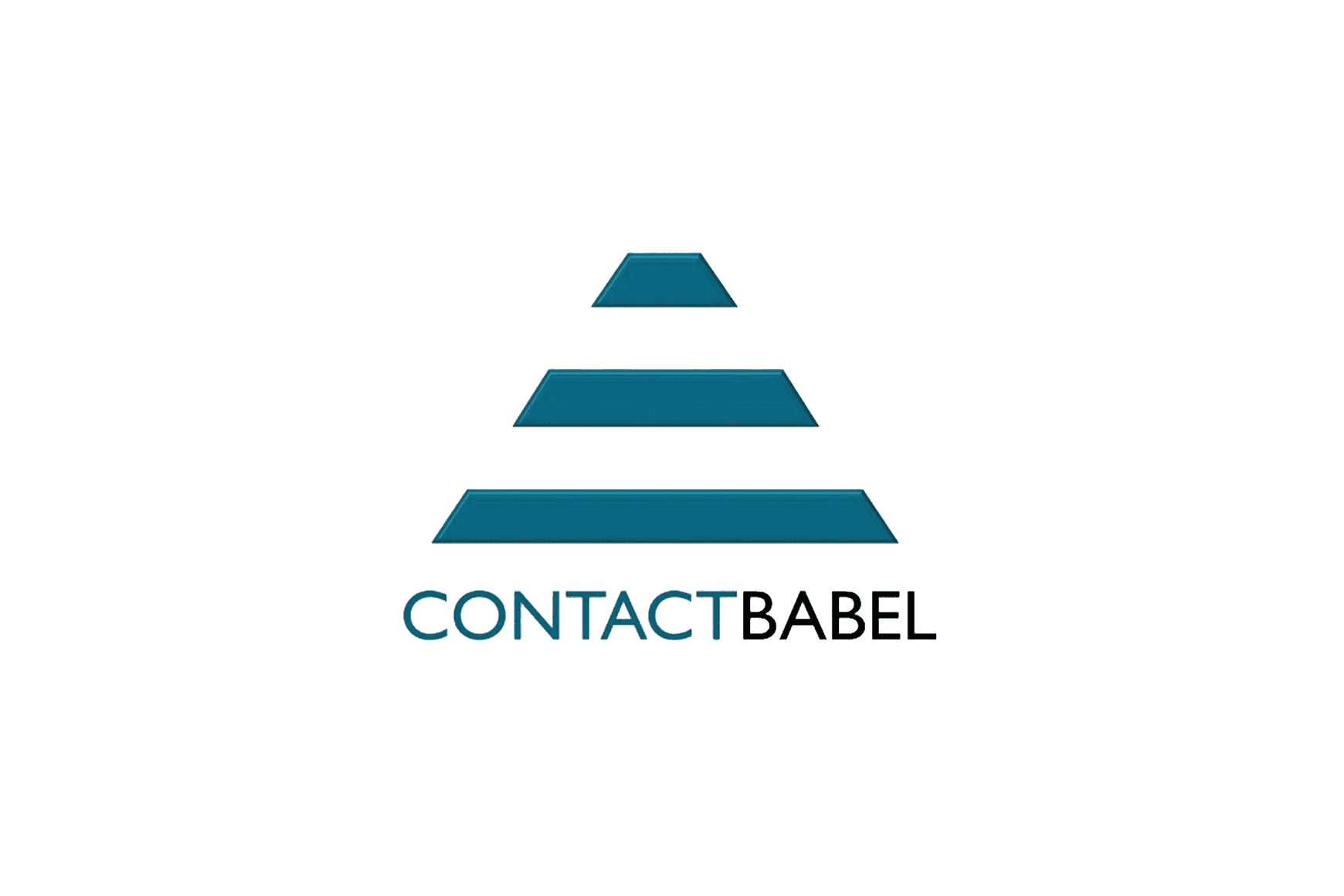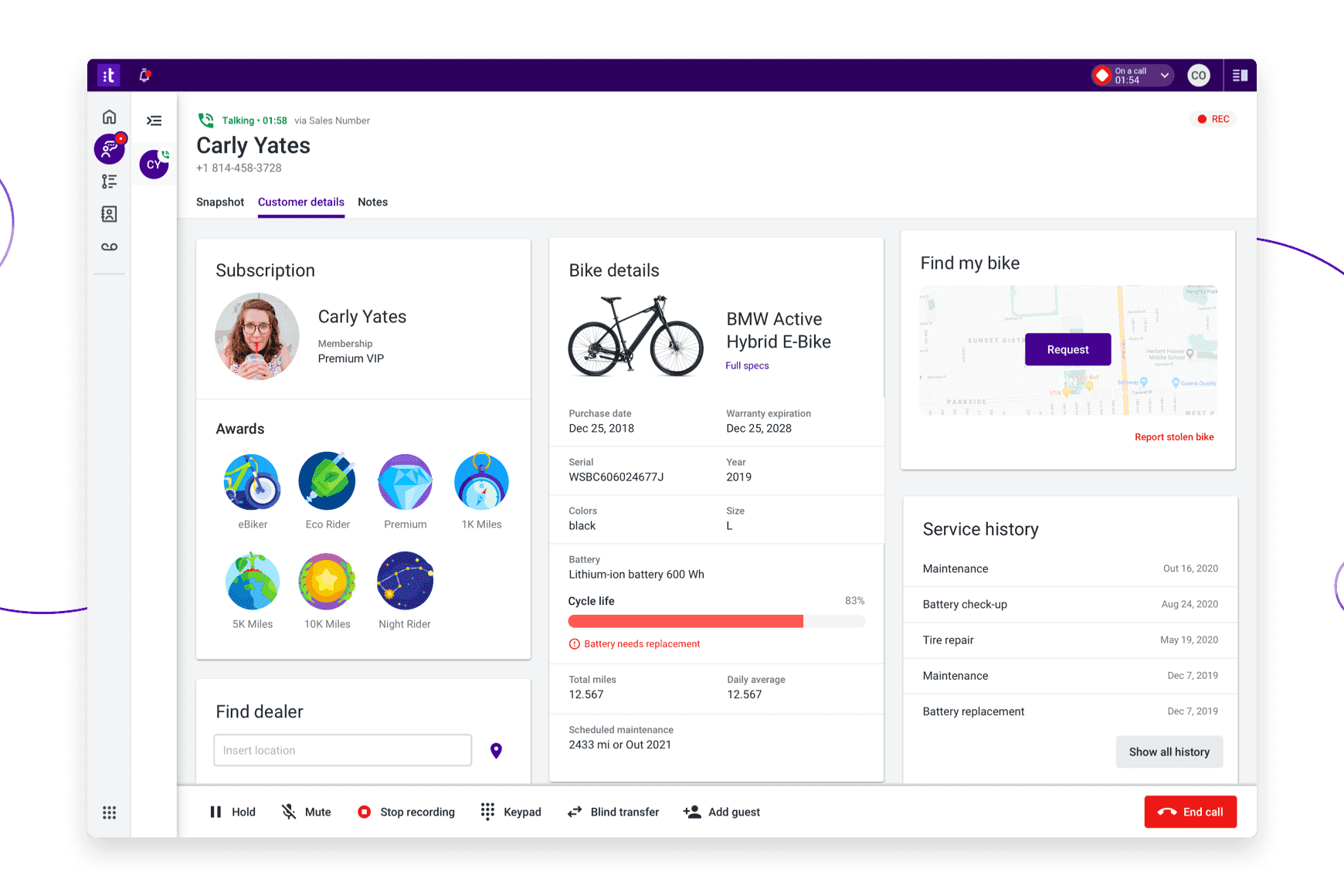Everything you need to know about omnichannel contact centers

By Taylor Grace
0 min read

Most of us still remember when the only option to reach out to a company’s customer service was to call the toll-free number and hope that the agent picking up the call was able to solve the issue. If they weren’t, the solution was to wait for another agent and explain the issue again. The evolution of technology is increasingly integrating it into our daily lives, and nowadays customers have several alternatives, such as email, social media, or chat, that make interacting with companies much easier.
The increase in available alternatives means more options, but it often leads to an increase in customer frustration as they need to explain their issue across the different channels.
Supporting several channels is only beneficial if they are integrated and allow a seamless transition from one to the other to avoid disjointed customer experiences. For example, if a customer sends an email with a question and decides to call about the same issue, the agent should be able to view the content of the email and the entire conversation history, enabling it to continue without the need to start over. With customers using a variety of channels to reach out to companies, omnichannel support is crucial for quicker issue resolution and enhanced customer satisfaction.
In this guide, we’ll show you:
- The benefits of implementing an omnichannel contact center, such as improved customer support and organizational KPIs.
- The key features of an omnichannel contact center, such as integrated communication channels, detailed customer profiles, and real-time analytics.
- The process of implementing an omnichannel contact center solution in your organization.
- The potential challenges you might face and how to overcome them.
- How Talkdesk can support you in your journey.
What are the benefits of an omnichannel contact center?
Omnichannel contact centers offer numerous advantages that significantly enhance customer support and drive improved organizational key performance indicators (KPIs).
More effective customer support.
One of the main benefits of omnichannel contact centers is the ability to provide more effective and efficient customer support. Integrating all communication channels enables businesses to engage with customers on their preferred channels, fostering better communication, and understanding of customer issues. The seamless transition between channels ensures customers don’t have to repeat information, not only saving time but also improving customer satisfaction.
Enhanced agent engagement.
In an omnichannel solution, agents can engage customers through various channels such as phone, email, social media, and live chat. This flexibility allows them to interact with customers more effectively and resolve issues faster. It also means agents can handle multiple interactions simultaneously, increasing their productivity and allowing them to build better customer relationships.
Improved organizational KPIs.
When customer support becomes more efficient, business owners can expect improvements in metrics like customer satisfaction (CSAT) and Net Promoter Score (NPS). These improvements directly correlate to increased revenue—statistics show an average 9.5% year-over-year increase in annual revenue for companies with strong omnichannel solutions, compared to 3.4% for companies with weak omnichannel solutions.

REPORT
The inner circle guide to omnichannel
Learn more about the main drivers and barriers to adopting omnichannel technologies, as well as exclusive tips to leverage omnichannel and deliver superior CX.
Six great omnichannel contact center features.
They have many features to optimize customer interactions and enhance customer experience. Here are six of the most important features:
1. Integrated communication channels.
According to a recent Salesforce study, 53% of customers surveyed said that their interactions with customer support teams are fragmented. This statistic emphasizes the importance of integrated communication for a smoother, more cohesive customer journey. An omnichannel solution integrates all communication channels and allows customers to switch between channels seamlessly without losing the context of their conversation.
2. Detailed customer profiles and history.
Customer data and contact history are aggregated to provide agents with comprehensive customer profiles. As a result, every interaction a customer has with your business, regardless of the channel, contributes to a unified customer profile. Access to this information allows agents to provide personalized service and resolve issues quickly.
3. CRM integration.
An important feature is its ability to integrate with CRM systems. This offers a more complete view of the customer information, facilitating personalized interactions and allowing agents to provide solutions tailored to each customer’s unique needs and history.
4. Proactive customer engagement.
Omnichannel contact centers empower agents to engage customers proactively and offer self-service options for resolving simple cases. Proactive engagement can include reaching out to customers with updates, reminders, or helpful tips.
5. Contextual routing.
Intelligent call routing assigns customer queries to the most suitable agents based on availability, skill sets, and customer context. This increases resolution time by matching customers with the right agent—someone with the knowledge to handle their specific needs. As a result, customer service teams can resolve customer inquiries faster and increase customer satisfaction.
6. Real-time analytics and reporting.
Real-time analytics and reporting features provide managers with critical insights for decision-making. These analytics can help identify trends, monitor agent performance, measure customer satisfaction, and more enabling businesses to continually improve their customer service strategies.
Implementing an omnichannel contact center solution.
Despite the clear benefits, many organizations have challenges when implementing this type of solution. How can you overcome common obstacles?
Assess organizational goals and determine readiness.
Before diving into the omnichannel strategy, businesses must consider their current capabilities, processes, and infrastructures. This involves evaluating existing customer support channels, comprehending customer preferences, and detecting gaps in the current system. The evaluation should also include defining clear goals for the omnichannel implementation.
Understanding what you expect to accomplish with an omnichannel strategy, such as increased customer satisfaction, higher agent productivity, or lower operational costs can guide your implementation process and help you measure success.
Define technology requirements.
Before implementing an omnichannel solution, it is vital to understand the current technological landscape. Many businesses continue to use on-premises customer service systems rather than cloud-based ones. Omnichannel cloud contact center solutions like Talkdesk provide a unified platform for managing all customer interactions.
Key technologies to consider include CRM systems, contact center software, and communication channels. These should be capable of integrating to provide customers with a seamless experience.
Establish cross-functional collaboration with key stakeholders.
Choosing and implementing an omnichannel solution should not be a siloed decision. It requires collaboration between various departments, including customer service, marketing, and IT. Ensuring these stakeholders are on board can assist the organization in achieving its common objective of enhancing the consumer experience.
Regular communication and involvement from all stakeholders can also ensure everyone understands the benefits of the omnichannel approach and is committed to its successful implementation.
Develop training programs.
After deploying the omnichannel solution, providing comprehensive training for agents and employees is essential. This ensures that everyone provide consistent customer experiences across all channels.
Training should cover the features and functionalities of the solution, best practices for interacting with customers across different channels, and how to address common problems.
Monitor, measure, and continuously improve performance.
Establish KPIs, such as customer satisfaction, first contact resolution, response time, and channel utilization. Use real-time analytics tools, like the Talkdesk real-time dashboard feature, to monitor performance in real time and make data-driven decisions.
Regular monitoring and measurement can identify areas for enhancement, ensuring your omnichannel strategy continues to provide value to both your customers and your business.

PRODUCTS | OMNICHANNEL ENGAGEMENT
Meet your customers where they are with Talkdesk Omnichannel Engagement.
Learn more about our all-in-one omnichannel engagement solutions.
Challenges with implementing an omnichannel contact center.
As promising as omnichannel contact centers may be, the path to successful implementation isn’t always smooth and organizations often find challenges during this process.
Understanding these obstacles will allow you to successfully navigate the implementation process. Here are some common challenges organizations face:
Integration complexities.
One of the biggest challenges is integrating different communication channels, legacy systems, and outdated technologies. This can be both complicated and time-consuming, requiring technical expertise and careful planning. It can also result in data silos, where information is confined to individual systems and is difficult to access or share.
Talkdesk provides implementation support to make this process smoother. Our team of experts can help you navigate the complexities of integration, ensuring all your communication channels and systems work together seamlessly.
Data privacy and security concerns.
With the increase of digital channels and the escalating amount of consumer data being collected, securing and managing data across multiple channels is essential. Organizations must comply with regulations such as the General Data Protection Regulation (GDPR) or the California Consumer Privacy Act (CCPA), which mandate strict data privacy and security standards.
Implementing quality security measures and ensuring compliance with these regulations can be daunting. Talkdesk ensures compliance with these regulations and provides security measures to protect your customer data.
Lack of visibility into the remote workforce.
The rise of remote work has posed new challenges for contact center agent management. With agents working from various locations, ensuring compliance, productivity, and quality of service can be difficult. Without the right tools and procedures, it can be difficult for managers to have visibility into their remote workforce, causing issues with performance monitoring, training, and quality assurance.
Talkdesk provides the tools and features for visibility and compliance of remote workforces. Our remote workforce solution is an AI-powered compliance solution that helps contact centers maintain compliance and reduce risk. This includes data on who on your team is logged in, the quality of their connection, and full history of agent activity.

ON-DEMAND MASTERCLASS
Looking for CX savings? Optimize your tech stack!
Learn how your contact center can simplify its tech stack to maximize ROI, drive efficiencies, align teams, and deliver exceptional CX.
Talkdesk is your all-in-one omnichannel contact center.
Implementing an omnichannel solution is not just about adopting new technology, it’s about transforming your customer service strategy to align with the needs and preferences of today’s customers. It’s a powerful tool—it not only integrates various communication channels for a unified customer experience but also provides insightful analytics, robust security measures, and effective workforce management capabilities.
Talkdesk is a comprehensive contact center platform that meets modern customer service demands. It helps organizations overcome integration complexities, data privacy concerns, and remote workforce management.
Are you ready to improve customer service and ensure your organization stands out? Book a demo with Talkdesk today and embark on your journey towards delivering superior omnichannel customer experiences.

INTERACTIVE DEMO
See Talkdesk Agent Workspace in action
This self-guided demo will allow you to experience how a contact center manager can empower their agents to deliver exceptional omnichannel customer experiences.
FAQs.
What is an omnichannel contact center?
An omnichannel contact center is a customer service hub that integrates multiple communication channels, allowing customers to switch between channels while maintaining the context and continuity of their conversation. It provides a consistent and unified customer experience, regardless of the channel used for interaction.
For example, a customer initiates a chat with a support agent on a website but must leave before the issue is resolved. In an omnichannel system, when the customer calls the support line later that week, the agent already knows what happened in the unfinished chat a few days earlier. The customer doesn’t have to repeat their issue and can pick up right where they left off.
Omnichannel support isn’t just a nice-to-have, it’s crucial for meeting modern customer expectations. Research has found companies with strong omnichannel customer engagement strategies retain on average 89% of their customers, compared to just 33% for companies with weak omnichannel strategies. This indicates the significant role that omnichannel options play in fostering customer loyalty and driving business success.
What’s the difference between a multichannel and an omnichannel contact center?
There are many differences between a multichannel contact center vs an omnichannel contact center. A multichannel contact center operates each channel independently. A customer can reach out to the business through any of these channels, but each interaction is treated separately. For example, if a customer sends an email about a problem and later calls the customer service line about the same issue, they will have to explain their situation again. This lack of integration can often lead to frustrating customer experiences.
On the other hand, an omnichannel contact center integrates all communication channels to provide a seamless and consistent customer experience.







